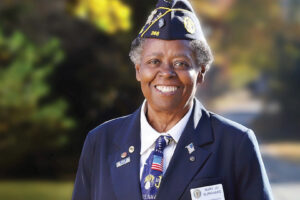 A few years ago, Walter “Bud” Burch’s wife, Kathy, found him on the kitchen floor writhing in pain. He had to be carried to their truck before being driven to the emergency department. Suffering from a chronic condition called trigeminal neuralgia, Bud lived with this kind of intense pain for more than 60 years.
A few years ago, Walter “Bud” Burch’s wife, Kathy, found him on the kitchen floor writhing in pain. He had to be carried to their truck before being driven to the emergency department. Suffering from a chronic condition called trigeminal neuralgia, Bud lived with this kind of intense pain for more than 60 years.
Trigeminal neuralgia affects the trigeminal nerve, which carries sensation from your face to your brain. For those with the condition, even mild stimulation of the face—such as brushing teeth—can trigger a debilitating jolt of pain.
“The pain on the side of my face was so severe that it would bring me to my knees,” explains Bud, 75, of Lawrenceville. “It could last five minutes or a half hour.”
Bud’s bout with trigeminal neuralgia began at age 12. The excruciating pain would come and go, bringing seizures with little warning. Over the years he tried a variety of treatments, including medication, Cyberknife® radiosurgery, and nerve block injections, yet the pain kept returning. It affected his job, which required long hours on the road. He often had to pull over to wait for the pain to pass. The condition is so relentless that many patients resort to suicide before finding relief.
Specialized Surgery Makes All the Difference
A staff member at his doctor’s office suggested that he see Mark McLaughlin, MD, a board-certified neurosurgeon on staff at CentraState. Dr. McLaughlin reviewed Bud’s medical history and recommended microvascular decompression surgery.
“Medications only mask the problem,” says Dr. McLaughlin, a leading expert in microvascular decompression. “For lasting relief, you have to get to the source of the pain. In properly selected patients, this procedure can change lives.”
During the surgery, Dr. McLaughlin made a small hole in Bud’s skull behind his right ear. Then, he moved the arteries that were placing pressure on the nerve and inserted a soft cushion between the trigeminal nerve and the arteries.
“It’s like putting a hotdog bun around the nerve to protect it from the artery,” explains Dr. McLaughlin.
For Bud, the surgery offered instant pain relief with no side effects. He was back on the road a month later, and he’s no longer on medication for the condition. Perhaps the best aspect of being pain-free, says Bud, is being able to eat steak and corn on the cob—forbidden foods for many years.
“I’m enjoying dinner with my family instead of being fearful of having a seizure,” says Bud.
In fact, Bud’s success is helping others. In speaking with another trigeminal neuralgia patient who was severely depressed, Bud gave him hope that surgery would help. The patient had surgery and is now pain-free, too.
“There’s light at the end of the tunnel,” Bud says. “I have a great family and a great career. This is the icing on the cake.”
For more information visit neurosurgery at CentraState, or call 866-CENTRA7 (866-236-8727).





